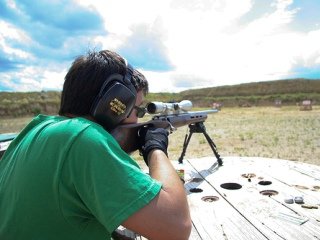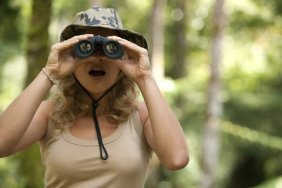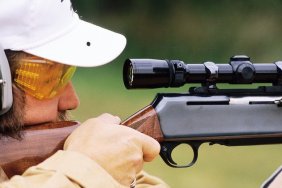 Hunting equipment has come a long ways in the last 100 years. The open sighted repeaters of the late frontier have largely been replaced by flatter shooting rifles topped with scopes. Winging bullets at distant game used to be an accepted practice which occasionally succeeded. Things have swung the other way now and it’s considered poor practice to take low percentage shots. On the other hand, modern advancements such as the scope and the range finder have greatly increased the responsible range of many shooters.
Hunting equipment has come a long ways in the last 100 years. The open sighted repeaters of the late frontier have largely been replaced by flatter shooting rifles topped with scopes. Winging bullets at distant game used to be an accepted practice which occasionally succeeded. Things have swung the other way now and it’s considered poor practice to take low percentage shots. On the other hand, modern advancements such as the scope and the range finder have greatly increased the responsible range of many shooters.
Range used to be a wild variable. Once game is beyond 250 yards or so it’s hard to judge distance with much accuracy visually, particularly if the distance is uphill, downhill or over a ravine. This is partially overcome by our flat shooting rifles. Mine is zeroed at 200 yards and is only 8 inches low at 300 yards and 19 inches low at 400. This makes shooting at unknown ranges out to 350 yards very easy. Much easier than shooting 45-70 yards 100 years ago with open sights and bullets dropping 20 odd inches at 200 yards. Modern range finders bring all of this to a whole different plane. An accomplished shooter can range the game at 400 yards with a dead rest and the conclusion will be a hit. Severe uphill and downhill shots still throw a big curve ball at most shooters. The solution is to actually practice those shots as well.
Emotions are quite possibly the reverse of modern equipment. It isn’t that our emotions have changed in the last 100 years so much as our hunting has changed. Instead of constantly carrying a rifle and shooting game, regulations and lifestyles limit our seasons. Instead of taking months to achieve 10 or 15 kills, it may take decades. Small game hunters and bird hunters are the exception. It is still very different shooting a rabbit or duck than looking down the barrel at a large 6 point bull or 10 point whitetail!! Emotions can go through the roof and great target shooters can lose all composure and miss even at close range. Do you know how you will react if a buck is coming in, rattling in the dusk, close up? Thinking it over and planning may help, however only actual experience provides the moment of truth needed for verification.
There is no substitute for spending time at the range. Even with ballistic tables and charts, it is irresponsible to ever shoot game at a distance greater than you have practiced. Stretching 400 yards at a range may be hard so head to the hills and find a safe location. Practice shooting on a bi-pod and in different field positions. Practice steep uphill and downhill shots. The key with steep shots is that the bullet trajectory will only account for the horizontal distance. It’s tricky, especially with archery equipment. This field experience will go a long way towards settling you down when a new shot is required during the hunt.








